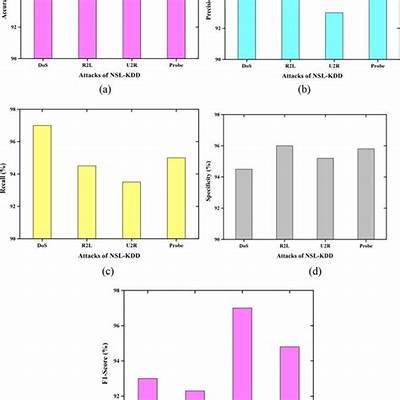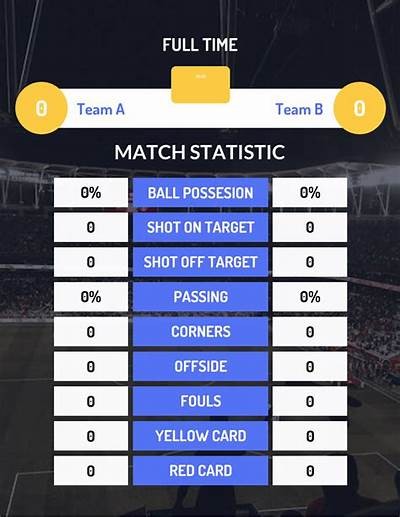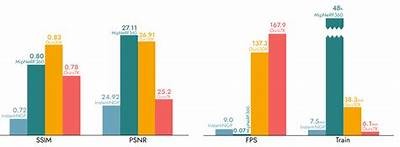In the world of competitive sports, statistics play a crucial role in understanding performance dynamics. The analysis of match statistics, especially for games such as soccer, basketball, and cricket, provides a wealth of information that can influence coaching strategies, player training, and even fan engagement. This article delves into the various dimensions of match statistics, with a focus on the game of soccer, commonly referred to as football in many parts of the world, to unveil insights that can shape performance assessments and tactical decisions.

Every match generates a plethora of data points, including goals scored, assists, possession percentages, shots on goal, and defensive actions. These statistics offer a snapshot of the game and can be dissected further to provide detailed insights into team and player performances. Understanding these statistics requires a deep dive into different categories, such as offensive and defensive metrics, which will be elaborated upon in the ensuing sections.

Offensive metrics are statistics that reflect a team's ability to attack and score goals. Key metrics include goals scored, expected goals (xG), assists, and successful passes in the final third. The concept of expected goals has gained popularity as it provides a better context for evaluating the quality of chances created compared to simply counting goals. This metric takes into account factors such as shot angle, distance from the goal, and the situation in which the shot was taken.

The most straightforward measure of a team's offensive performance is the number of goals scored. However, a comprehensive analysis goes beyond this number to evaluate how those goals were created. Identifying patterns in goal-scoring can reveal a team's strengths and weaknesses, informing tactical adjustments in future matches.

Assists are crucial for measuring the support provided by players in scoring situations. Analyzing assists alongside passing accuracy helps in understanding how well players are functioning within their squad. High assist numbers combined with effective passing rates often correlate with successful offensive plays.

While offensive prowess is essential, strong defensive capabilities are equally important for a team's success. Defensive statistics include tackles made, interceptions, blocks, and the number of times a team concedes possession. These metrics are significant indicators of how well a team can prevent the opposition from scoring. Tackles and Interceptions
Defensive actions such as tackles and interceptions play a pivotal role in a team's ability to disrupt the opponent's play. A high number of successful tackles often correlates with a team's capacity to regain possession and launch counter-attacks. Goals Conceded
Analyzing the number of goals conceded is vital, but understanding the context surrounding these figures can provide deeper insights. Factors such as defensive line organization, goalkeeper performance, and the effectiveness of set-piece defense all contribute to the overall defensive statistics that teams must analyze to improve their performance. Advanced Metrics and Modern Analysis
The evolution of technology in sports has led to the development of advanced analytics that take traditional statistics to another level. Metrics such as Player Efficiency Ratings, Pass Completion Rates, and Heat Maps have become increasingly important in providing a more comprehensive view of performance. Player Efficiency Ratings
Player Efficiency Ratings (PER) combine various individual statistics to provide a holistic view of player effectiveness on the pitch. This metric allows coaches and analysts to gauge a player's overall contribution to the team's performance rather than focusing on isolated stats. Heat Maps
Heat maps visually represent a player's movements during a match, illustrating how often they occupy different areas of the pitch. This data can help coaches understand their players' positioning and movement patterns, enabling more informed tactical decisions. Applying Insights from Statistical Analysis
Ultimately, the analysis of match statistics is only as valuable as the actions taken as a result of those insights. Coaches and analysts must develop strategies that leverage the data uncovered through comprehensive performance reviews. These strategies may involve adjustment in training drills, strategic changes in line-ups, or tactical modifications during matches. Training Regimens
Data derived from match statistics can inform training methods by highlighting areas where players or teams struggle. For instance, if a team consistently concedes goals from set pieces, this could indicate a need for targeted defensive training focused on these situations. Tactical Adjustments
In the wake of match analysis, coaches can employ different tactical formations or strategies to enhance play quality. Understanding how match statistics relate to various formations can help coaches dictate the flow of the game better. For example, if a particular formation leads to a higher number of shots on goal, it might be worth implementing more frequently in future matches. The Role of Technology in Sports Analytics
The growth of technology in sports has transformed how match statistics are tracked and analyzed. Tools such as GPS tracking, video analysis software, and data analytics platforms have revolutionized performance assessments. These technologies not only allow for more accurate data collection but also enable deeper analysis, providing a clearer picture of a player or team's performance. Conclusion
In conclusion, the detailed analysis of match statistics is an indispensable aspect of performance evaluation in sports, particularly in soccer. The integration of offensive and defensive metrics, advanced analytics, and technology has opened new avenues for understanding game dynamics. By leveraging these insights, teams can make informed decisions that enhance their overall performance on the pitch. As the sports landscape continues to evolve, the role of comprehensive performance insights derived from match statistics will undoubtedly grow, making understanding and utilizing this data more critical than ever.